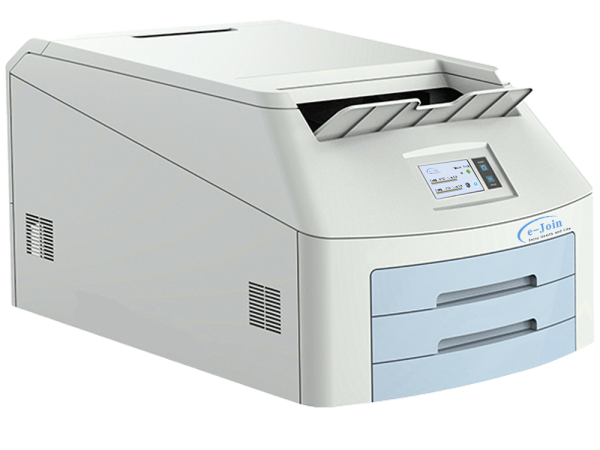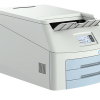Powerful Radio-frequency Identification (RFID) Technology
Composed of an RFID chip, an antenna, and a substrate, each RFID label is encoded with a unique code that allows itself to be identified without error and without the need for line-of-sight between the label and the RFID reader in the imager. The confidential sensitive data with encryption and physical shielding represented by the code is transmitted via radio waves from the antenna to the reader. A RFID reader in the film tray automatically initiates the printing-permission function when a new batch of film with a matched RFID label is loaded into DT500 imager.
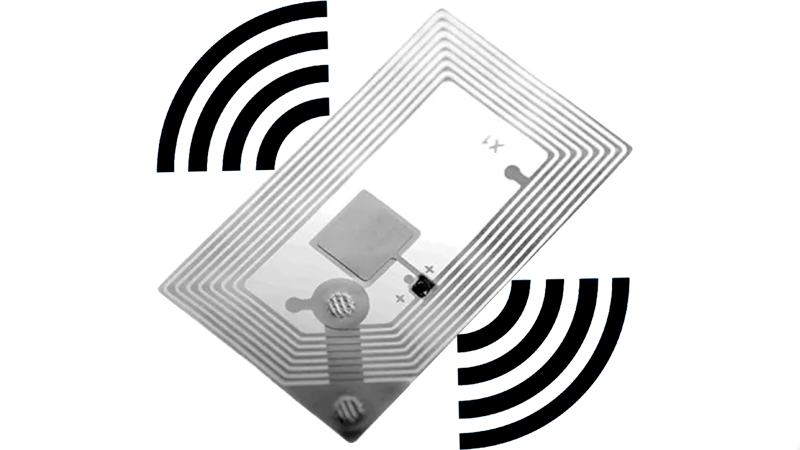
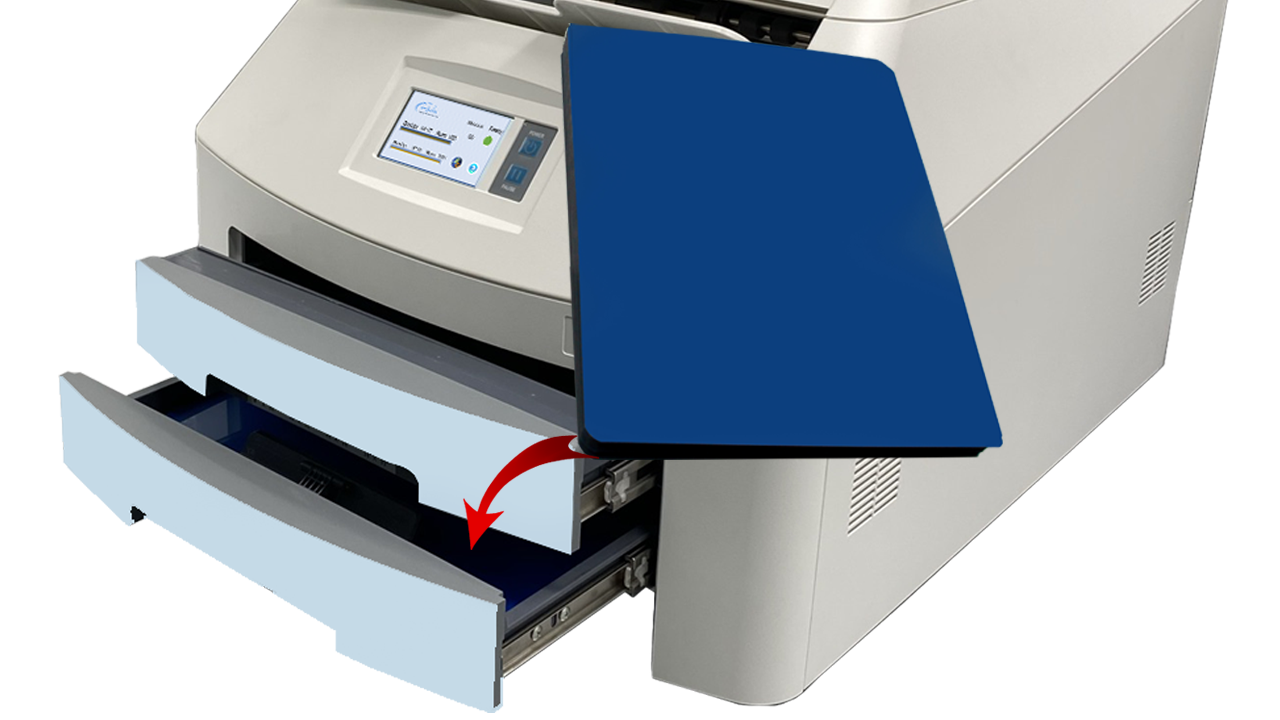
Four Film Sizes and Daylight Film Handling
Configured with two film trays, allowing printing with four film sizes: 8×10” (20×25 cm), 10×12” (25×30 cm), 11×14” (28×35 cm), and 14×17” (35×43 cm). Each tray holds 100 film sheets to minimize loading frequency. Film handling in five easy steps includes pulling out the tray, replacing the old RFID label with a new one in the fixed slot, then sliding the new packaged films into place, finally pushing into the film tray, and checking screen to confirm status in the daylight.
Speed and Compactness
To pursue fast mass volume processing, various approaches to the compact body, such as adoption of the rubbing roller of the film feed unit, and adoption of the fast rising-cooling print head, have contributed to creating the shortest film path structure. In addition to optimizing the mechanical structure, a completely control program has been added to the cooling process that comes at the end of printing. To rapidly cool films after solid-state imaging formation, the program will quickly boost the heat exchange mode for the internal and external air at the end of the printing moment.
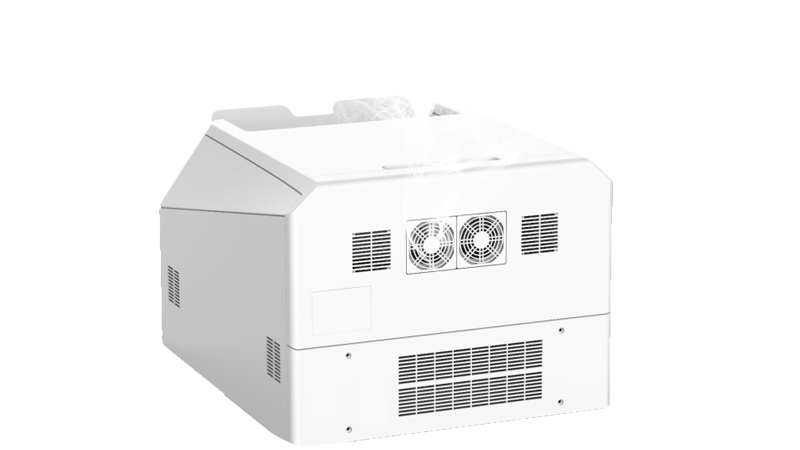
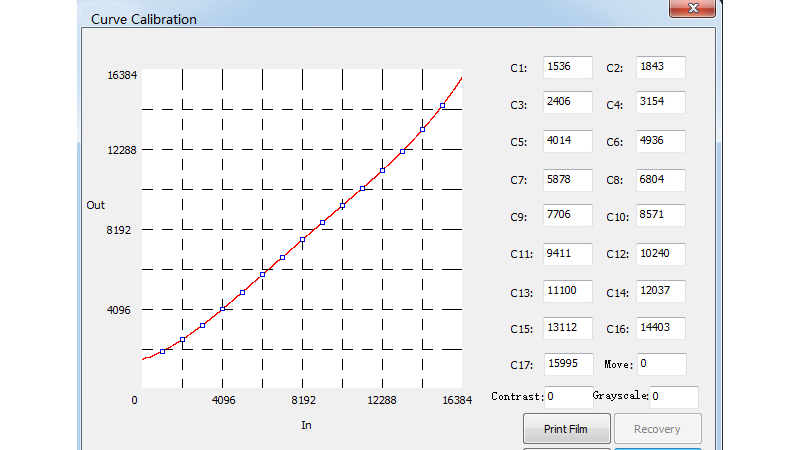
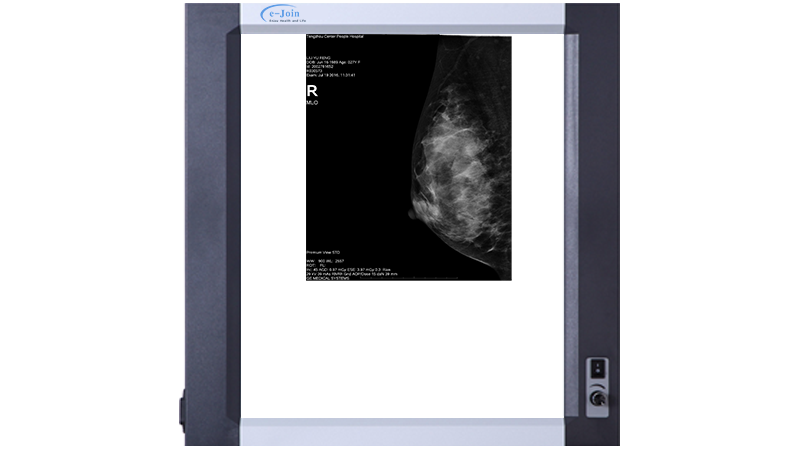
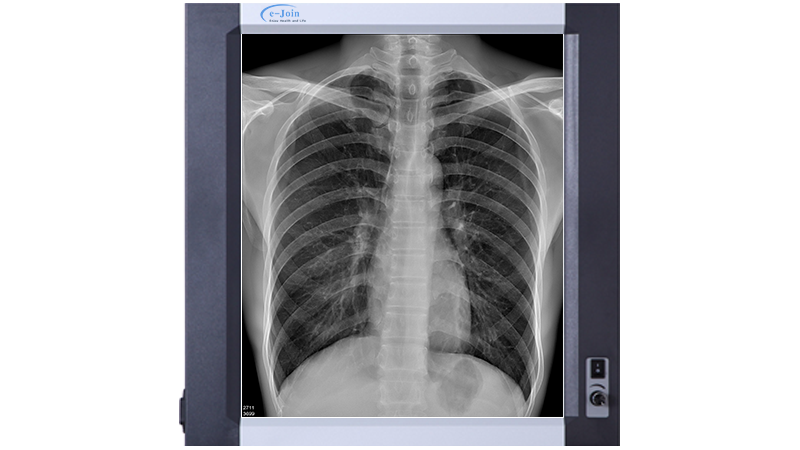
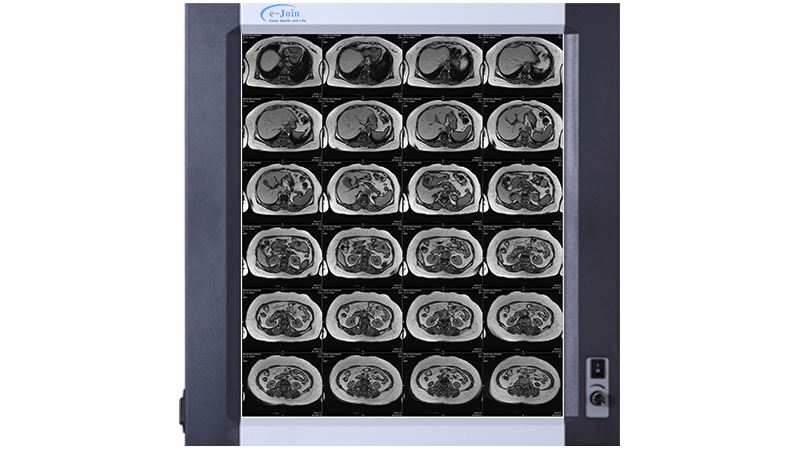
Built-in LUT Curve Adjustment
Belying a high resolution of 50-um pixel pitch, Built-in LUT Curve Adjustment not only offers the most suitable image tones with 14-bit density resolution for devices such as Full-Field Digital Mammography (FFDM), Digital Radiography (DR), Computed Tomography (CT), Magnetic Resonance Imaging (MRI), and Digital Subtraction Angiography (DSA), but also allows adjustment of the tones to enable printed film to match diagnostic monitors more accurately and the medical imaging needs of individual patients.

